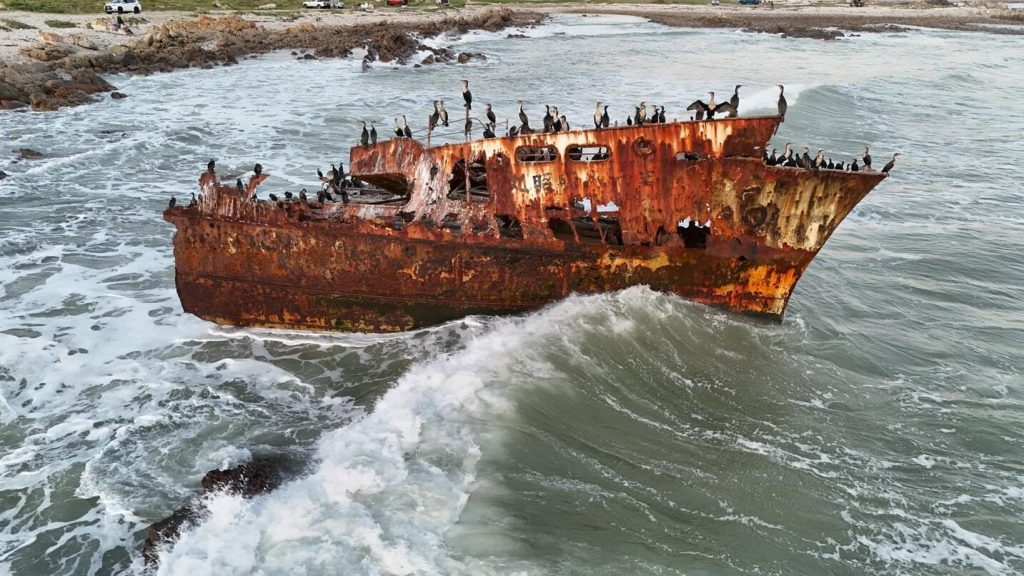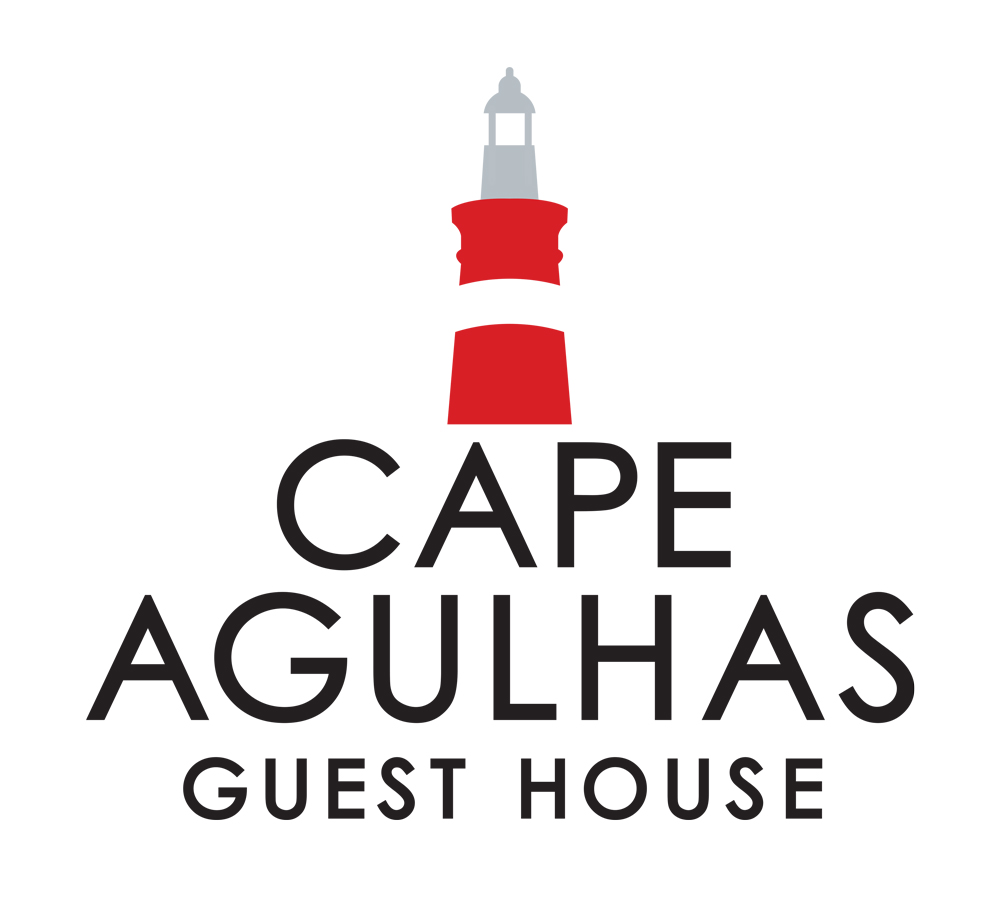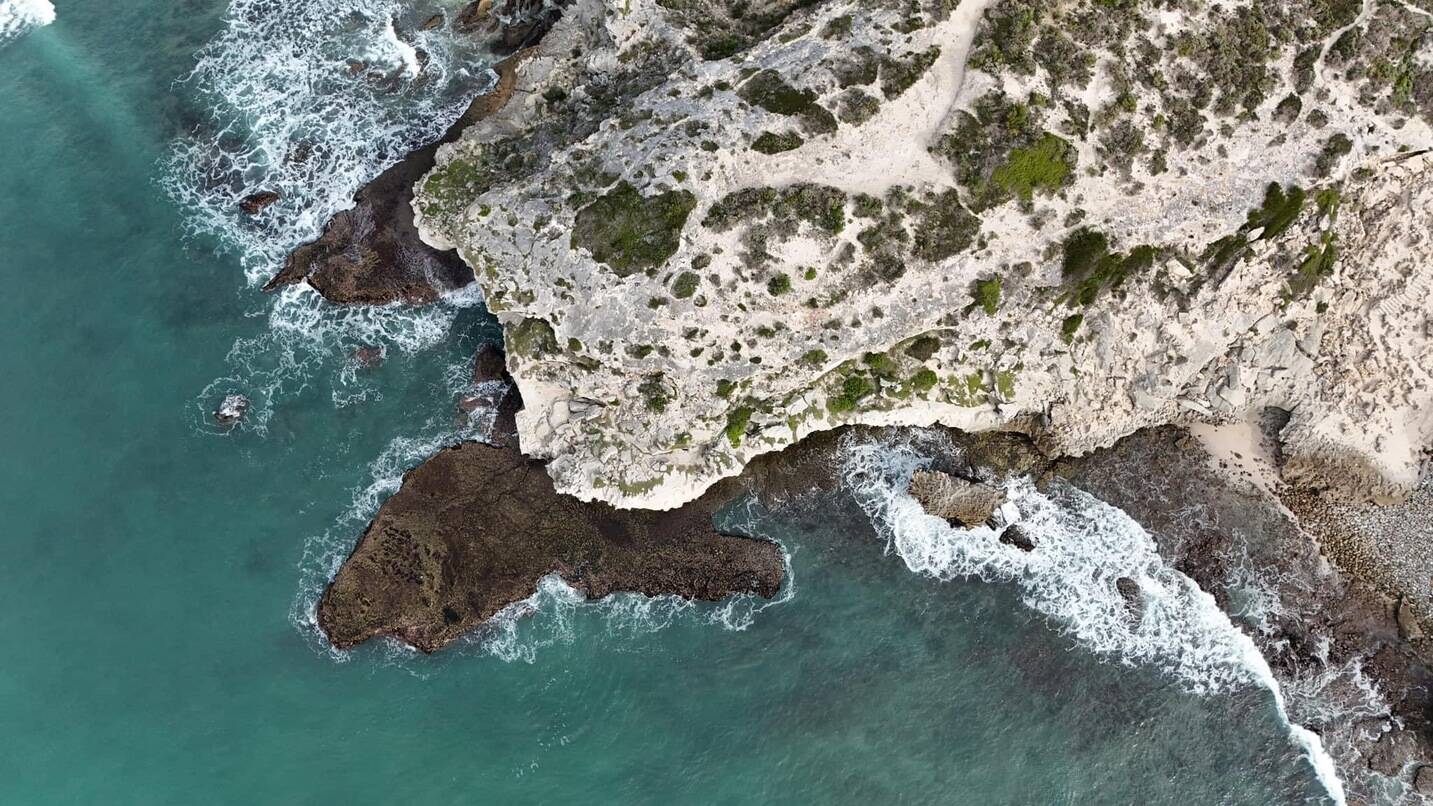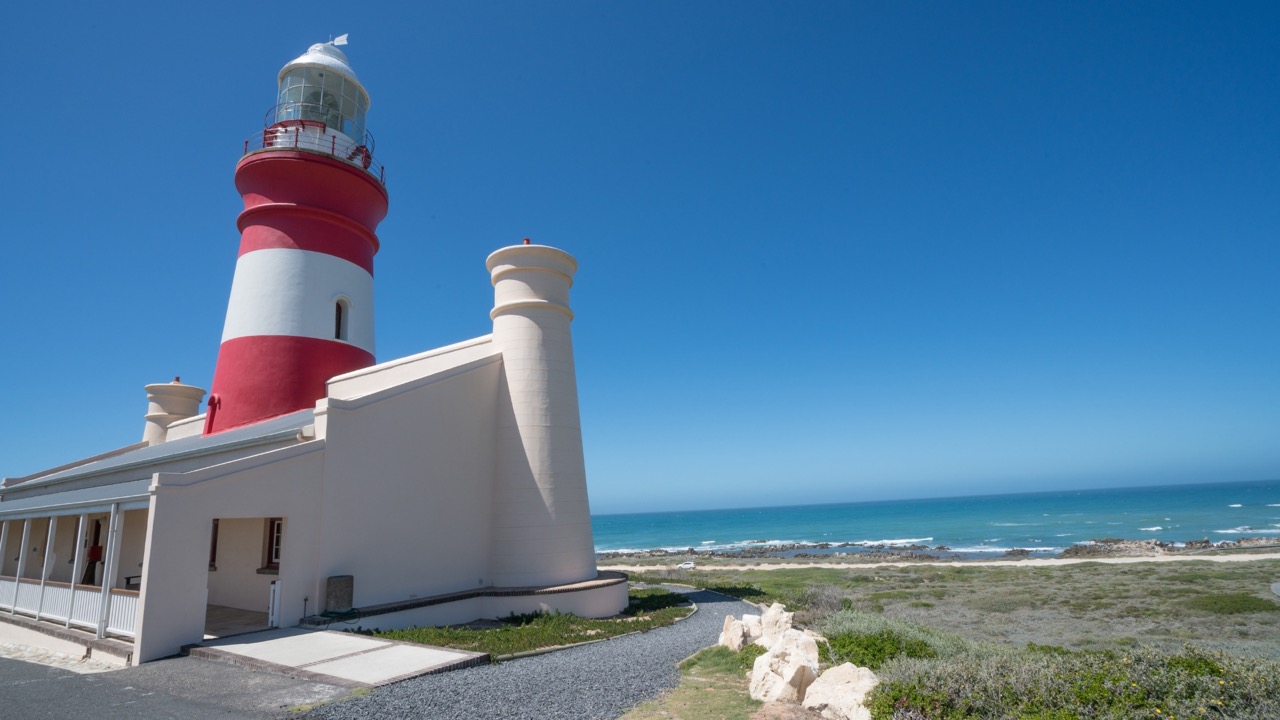The Meisho Maru shipwreck is an iconic sight along South Africa’s southernmost coastline. The wreckage, located at the Tip of Africa, has stood vigil against the waves since the 1980’s. But this Japanese fishing vessel holds a remarkable tale as everyone on board survived, leaving the steel ship to it’s salty-end against the rocks of Cape Agulhas. Now, the wreck is a popular site for travellers and photographers seeking eerie though stunning sunset shots where the two oceans meet.

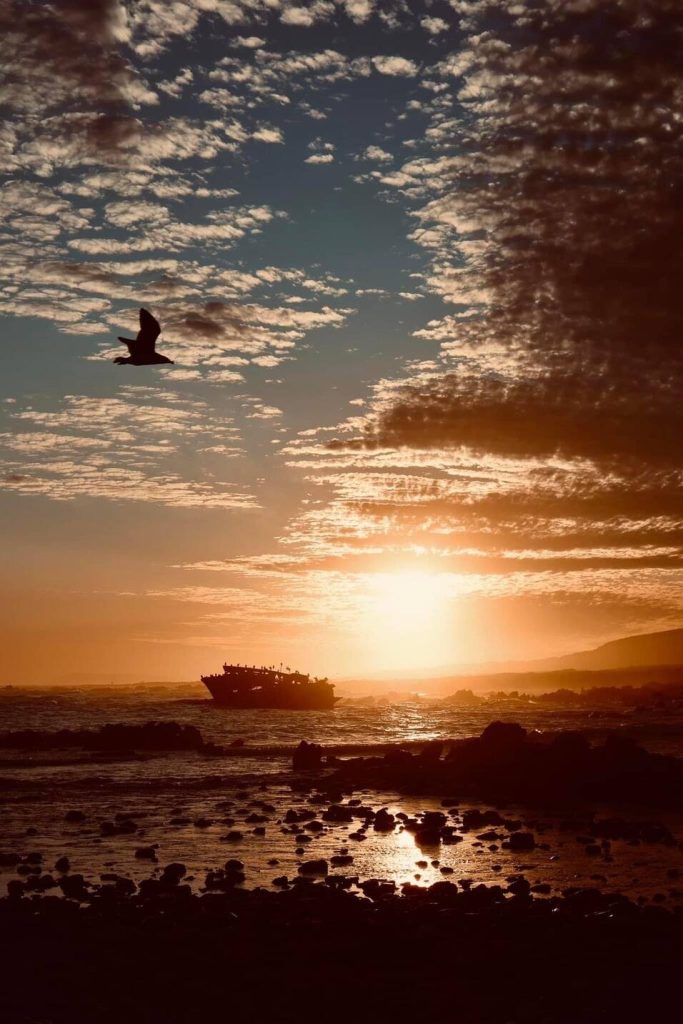
The Wreck of Meisho Maru No. 38
The Japanese crew of the Meisho Maru No. 38 fishing vessel could not have picked a more beautiful place along South Africa’s coastline to run aground.
Of course, the crew wasn’t looking at the scenery at 3am on 16 November 1982 when they got into difficulties, and sightseeing was probably far down on their list of priorities, but the fact remains that the wreck is located in a remarkably scenic and historic spot at the southernmost point of the African continent.
It’s also worth mentioning that the Meisho Maru wreckage is located within a stone’s throw (about 1.5 kilometres) of the Cape Agulhas Lighthouse and ‘Tip of Africa’ monument.
Also Read: Famous Shipwrecks Along South Africa’s Coastlines
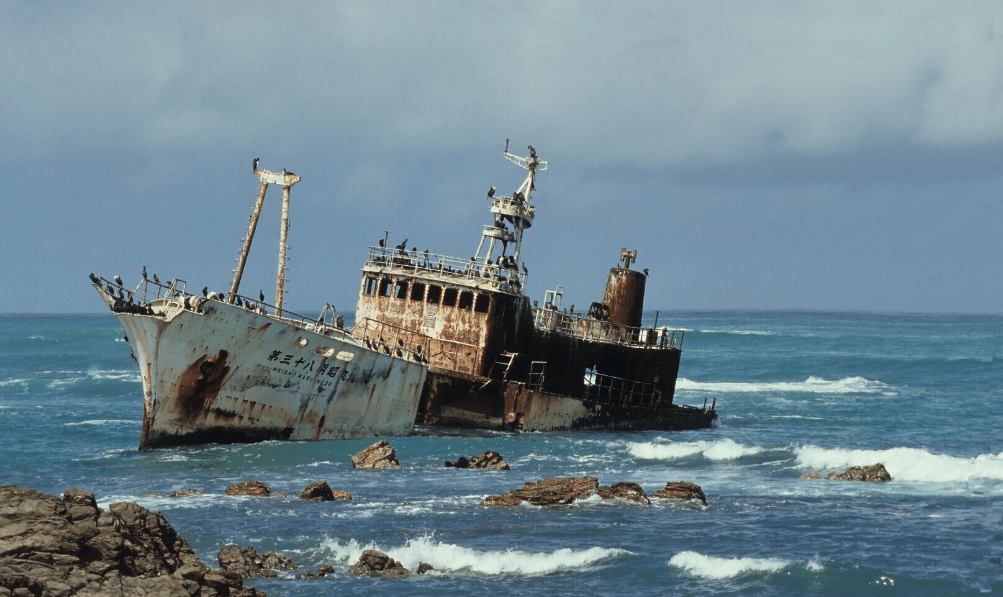
South Africa’s coastlines are a treacherous passage for even the biggest ships, and Cape Agulhas has a long history of treacherous seas and ships caught in storms. The Meisho Maru is one of the 140 ships who met their sudden end at the Tip of Africa. It was 3:00 am on the morning of November 16, 1982, when the crew of the Meisho Maru No. 38 issued an emergency call for help. Their vessel had run aground about 1.5 km west of the town of Cape Agulhas, at southernmost point of the African Continent.
The ship, which was was a Japanese trawler carrying about 250 tons of tuna in her holds when she grounded, was to remain in Cape Agulhas forever.
Luckily, the ship wrecked close to the shoreline and all 17 crew members were able to swim to safety— but the vessel didn’t fare as well. The Meisho Maru shipwreck has slowly been eroding since it’s sudden embarkment in 1982. While much of the ship is still visible today, the Meisho Maru’s rusted and weather beaten bow sinks a little lower below the waves with each passing year.
In the image below, taken in 1987, you can see what five years of damage by the ocean can do. A few years ago, during the early 2000’s, she slowly split in two. Today, only the bow section remains visible above the surf line and, in a decade or two, there’ll barely be a glimpse of the ship above the waves at all. If you look at old photos of the Meisho Maru wreckage, you will also notice that the bow was rotated by a storm or rough waves at some point during the intervening years.
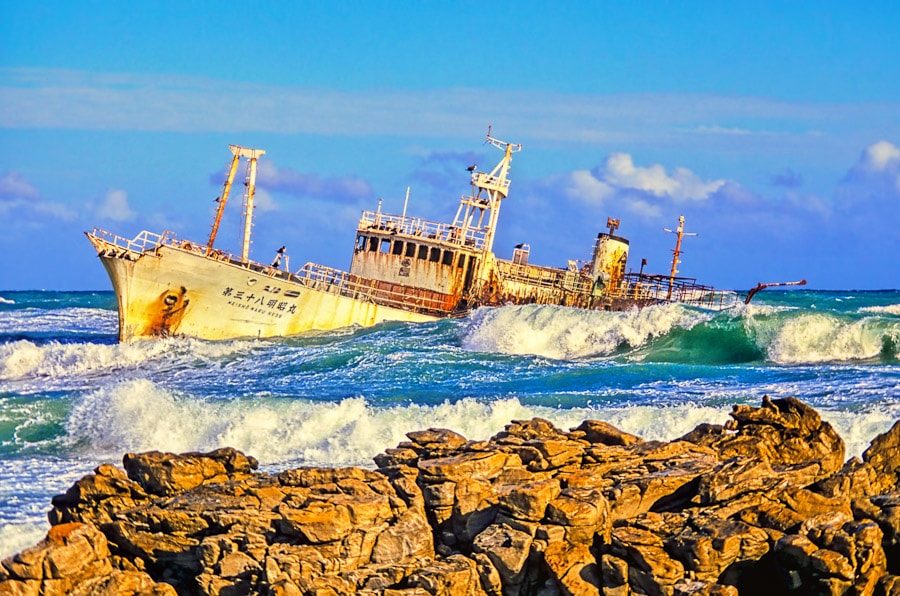
Shipwrecks in Cape Agulhas and the Cape of Storms
The Meisho Maro isn’t the only ship to have met it’s sudden end at Cape Agulhas. The Cape is infamously known as the ‘Cape of Storms’, and South Africa’s southern coastline is home to many shipwrecks and historic naval sites scattered along the rocky shores and shallow sand banks.
From the earliest records of navigating the passage of Africa during the early 1500s, including the height of trade between Europe and India in the 1800s, over 2500 shipwrecks have occurred along the South African coastline. Ships from all over the world, from a diverse range of cultures and countries, including early Portuguese explorers, the British Royal Navy, French, English and Irish Settlers, and Dutch East India Company ships carrying precious cargo from all over the world.
The Cape Agulhas coastline is located at the most southerly tip of the African Continent, and numerous shipwrecks and naval tragedies during the New World explorations between India and Europe during the 17th and 18th Centuries. The Cape Agulhas Lighthouse, built in 1847, was constructed by the British to help ease the passage of ships around the Southernmost point of Africa. But the storms and strong ocean currents remained formidable and, in 1982, the Meisho Maru struck ashore less than 1.5 kilometres (0.9 miles) of the L’Agulhas lighthouse.

Where is the Meisho Maru No. 38 shipwreck located?
The exact o-ordinates of the Meisho Maru wreck are -34.829763, 19.983845. But, you will easily see the wreck if you drive from Cape Agulhas towards Struisbaai, along the coastal dirt road. If the sun is out and you’re watching the coastline, you can’t miss it.
It is also very easy to access by foot. Located near the L’Agulhas National Park, there is ample parking nearby and the beach trail is a flat walk along the coastline (about 1.5 kilometres from the signage at the southernmost tip of Africa).
Can I swim up to or climb the Meisho Maru Shipwreck?
While the Meisho Maru shipwreck is a fascinating sight, for your safety, the Cape Agulhas Municipality strongly discourages visitors from swimming up to, diving around, or climbing on the shipwreck. The wreckage is in a fragile state due to erosion and rust, and there’s a high risk of getting hurt. Additionally, the surrounding waves and rocks can be dangerous. It’s best to admire the Meisho Maru from a distance.
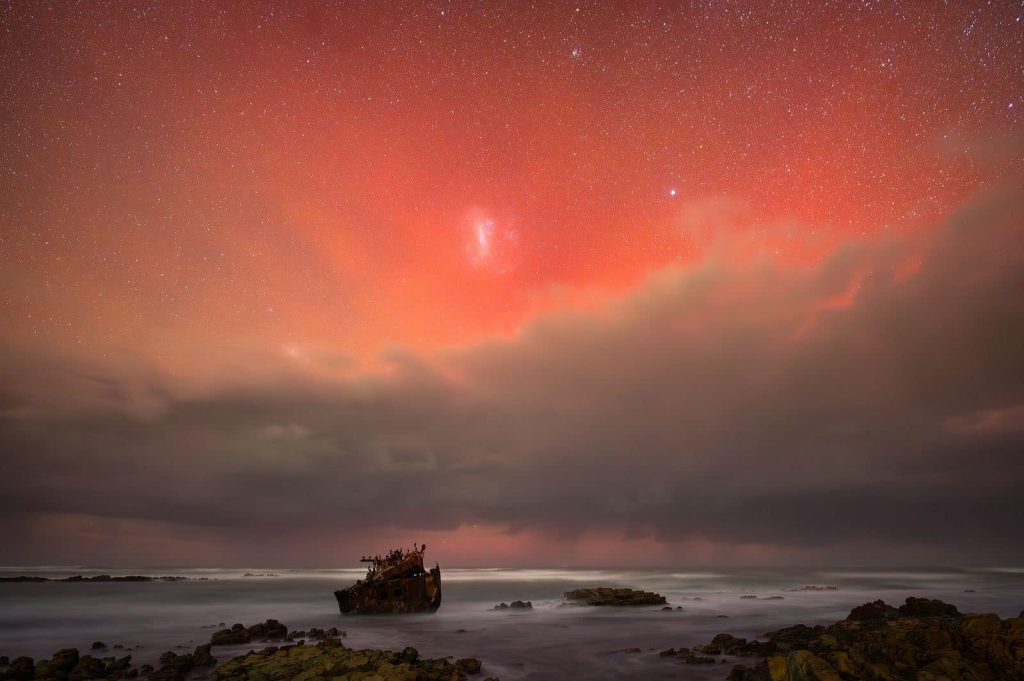
Why is the Meisho Maru wreckage so damaged and rusted?
The Meisho Maru No. 38 has been stranded there since 1987, taking a beating from the ocean for nearly 40 years. Salt, storms, and crashing waves have all taken their toll on the vessel. The relentless power of the sea can tear apart even the strongest steel, and the Meisho Maru is no exception. That’s just what happens when something gets pummelled by the ocean for four decades.
What is the most famous shipwreck in South Africa?
There are two shipwrecks that stand out in South Africa’s maritime history. The most famous shipwreck is the Nieuw Haarlem wreckage of 1647, which (quite literally) ‘put South Africa on the map’. The wreckage, which resulted in more than 60 crew members settling on the shores of the Cape for over a year, catalysed the creation of Cape Town.
Another famous South African shipwreck is the HMS Birkenhead, which met her doom in 1852, earned her fame by being the first to employ the “women and children first” protocol. The men, who were mostly soldiers, were ordered to “stand fast” while the woman and children were given priority over the lifeboats.
